| |
A Cloudy Eclipse
05/16/2022. One thing to keep in mind: the sky doesn't have to be clear to be spectacular. This picture does have to be big, though, so click it.
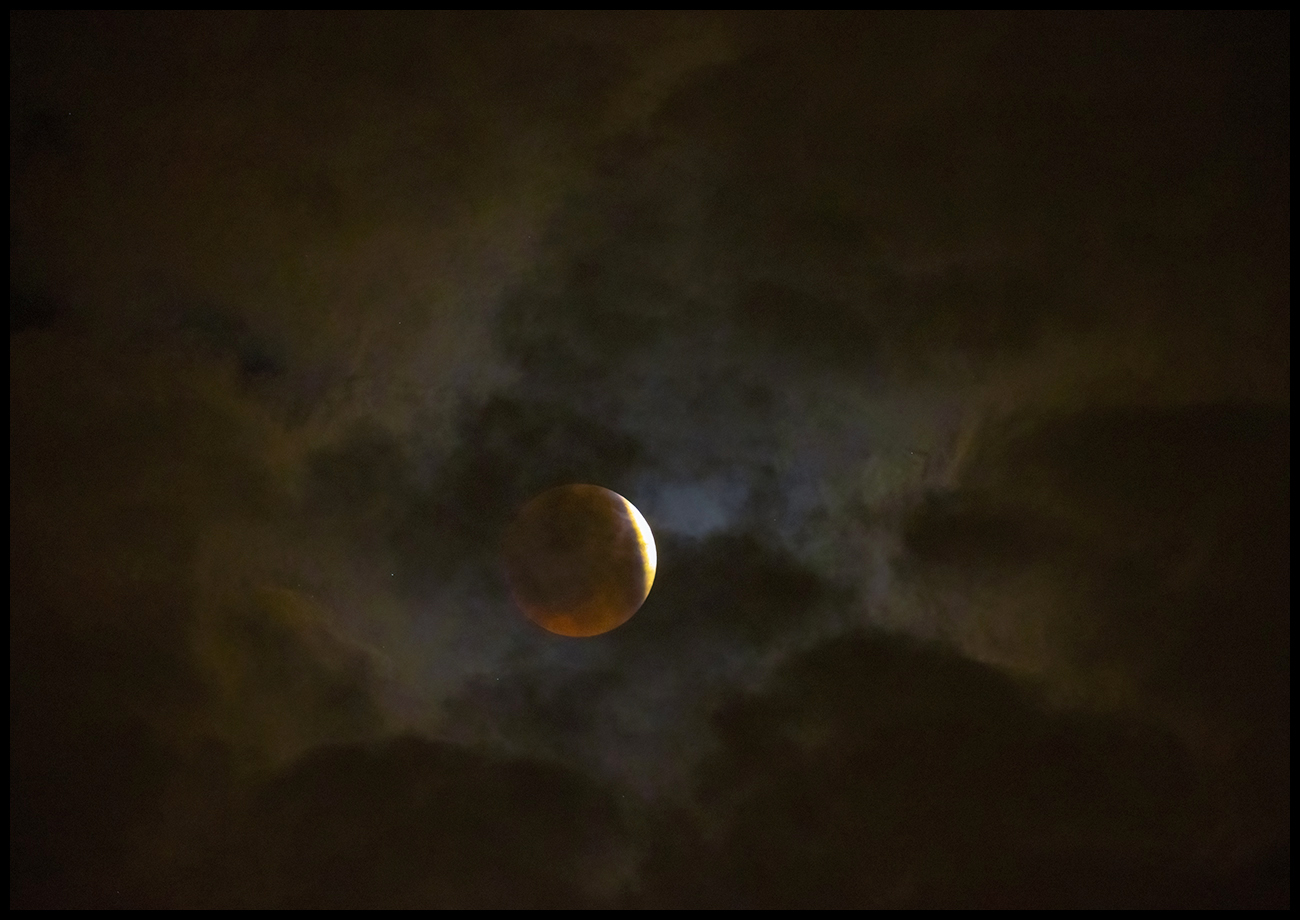
Almost every forecast for tonight's weather called for the heavy clouds that had capped the sky all day to break up just about the beginning of totality. I took my lightest equatorial mount up to the cul de sac under hopeless skies about 11:00, and, sure enough, within a few minutes a few stars appeared in the west as the clouds pushed east. Focusing targets! I thought. By the time I had the TMB92 and camera mounted and tracking, the all-but-totally-eclipsed Moon was peeking in and out from fast-moving clouds. That's a better focusing target, I thought, and got down to business.
Click any of the photos on this page for a better, bigger view.
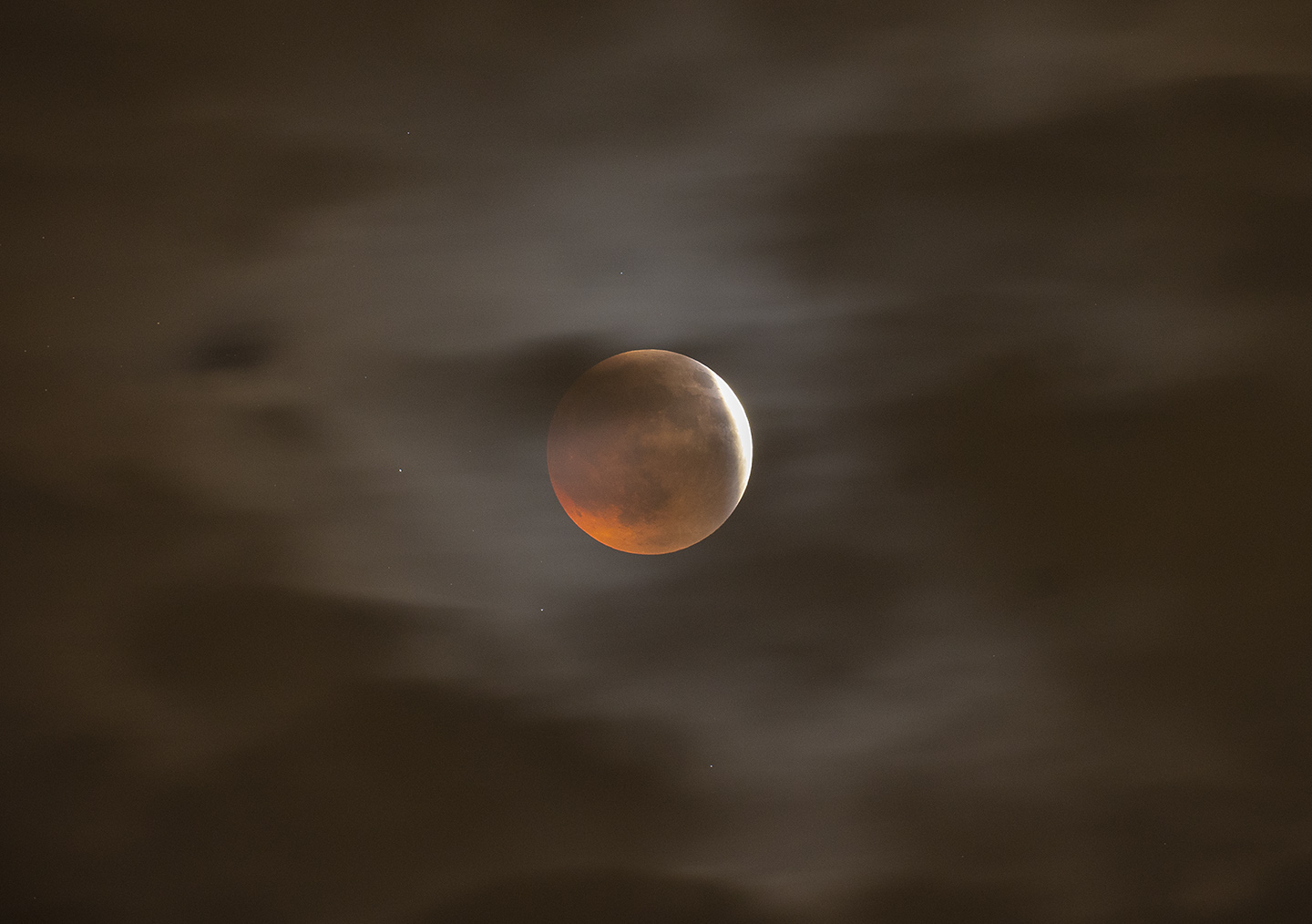
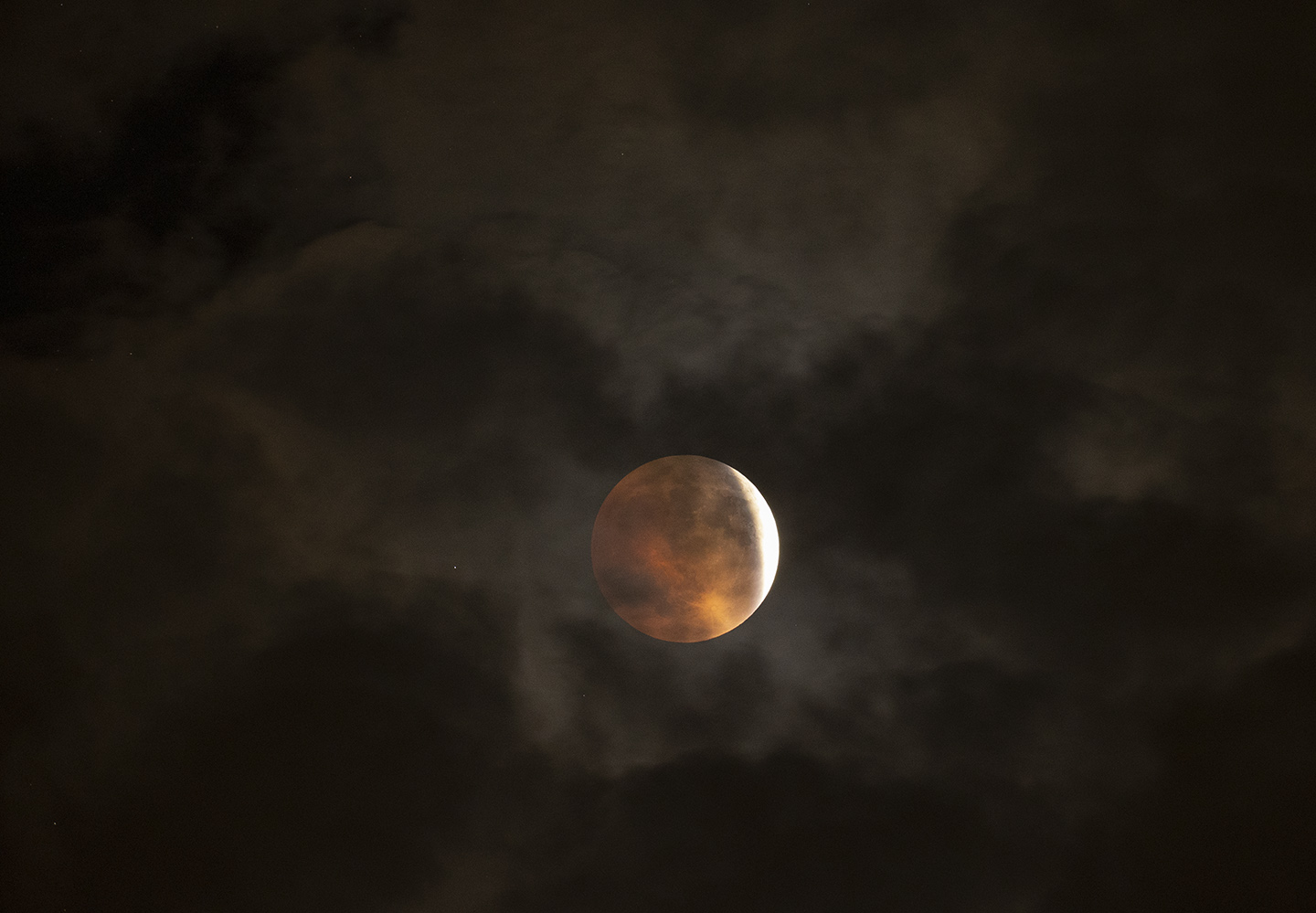
The view to the south invited some wider photos, too, and I discovered that I had not packed a tripod. Who goes out for astrophotos and doesn't pack a tripod? Pessimists who don't really believe the weather forecast, that's who. I made an ad hoc bean-bag out of junk in the car and tried some frames with the 85mm Rokinon at F1.4, counting on the in-body stabilization of the R6 to help out.
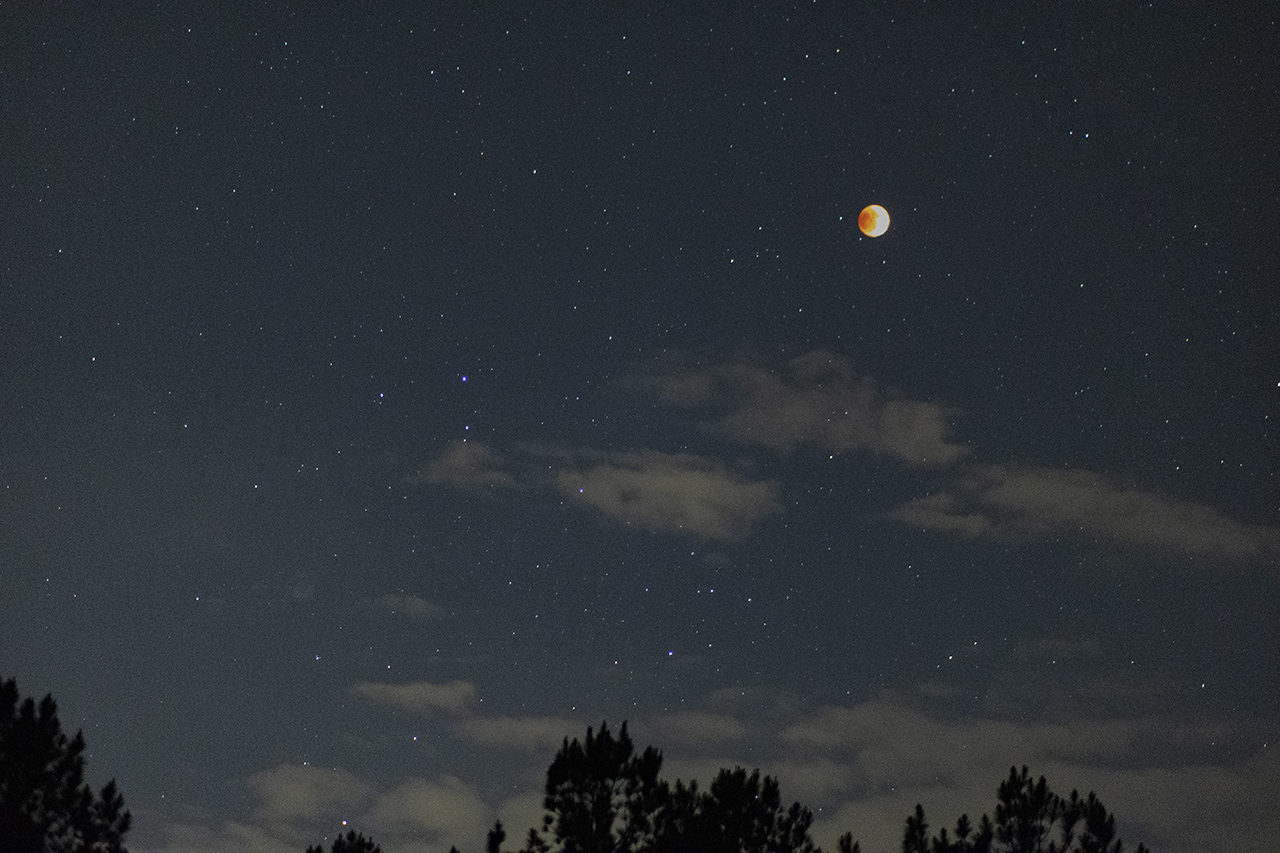
Then I went down to the house to see if Amy wanted to come up and have a look. From down in our hollow, the eclipse was hidden by trees ("In the pines, in the pines, where the Sun never shines" -- it's like that). When we returned to the cul de sac I brought along a tripod and a small tracking platform.
With a 12mm Nagler behind the TMB92, there was hardly any hint of the orange and peach hues clearly visible to the unaided eye and in the photos. In the eyepiece, the Moon was a steel-grey, slightly blue orb. I have zero explanation for that. Later on, after the sky cleared some more, the view in the eyepiece finally shaded toward the familiar and expected peach-lit-from-within appearance, but it was never vivid. Go figure. For what it's worth, I'd call this one a darker than usual eclipse. The photos through the telescope give no hint about the color oddness.
While Amy had a look through the 'scope, I put the 85mm Rokinon on the tracking platform and plinked away at the southern sky.
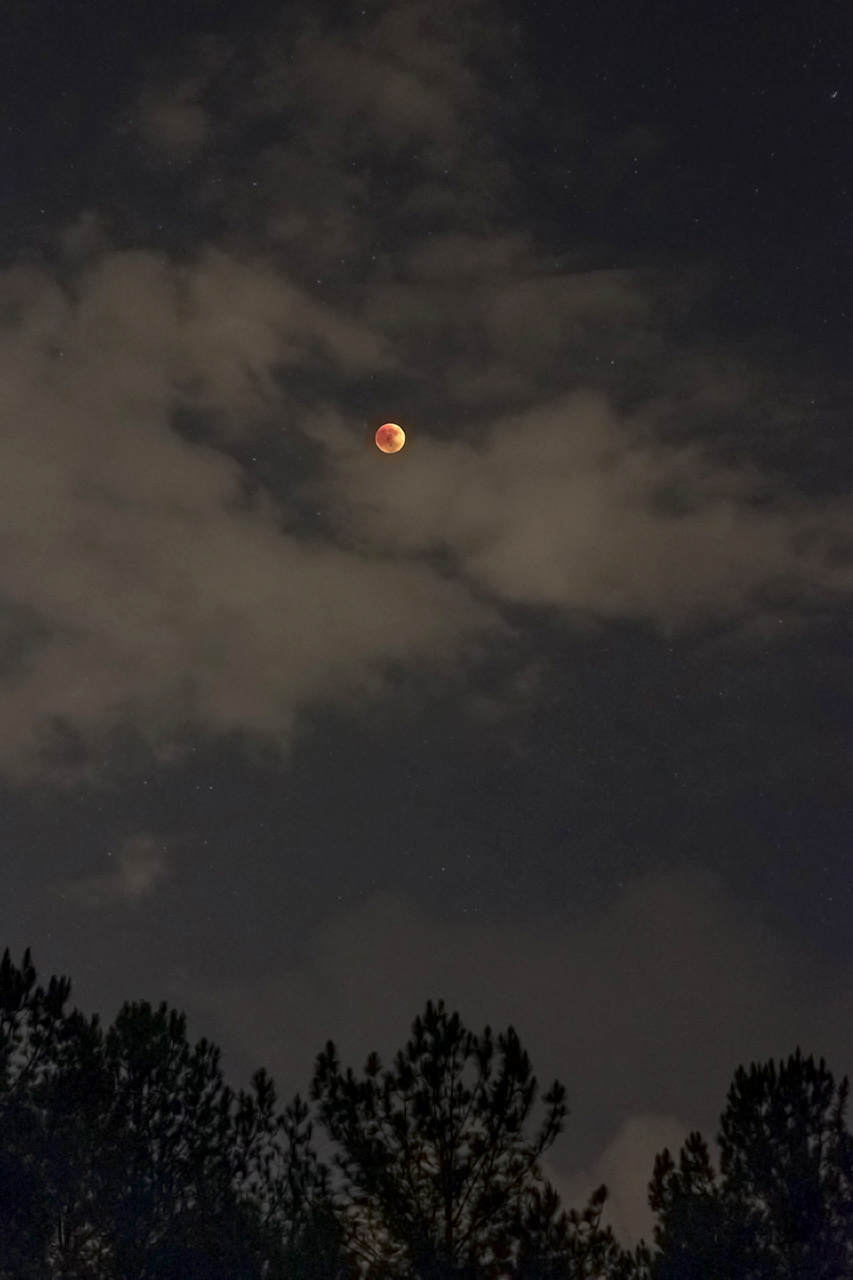
With the camera back behind the TMB92, I did a series of photos of the totally eclipsed Moon. Clouds returned. I called it a night. In November, let's get up early and try it all again.
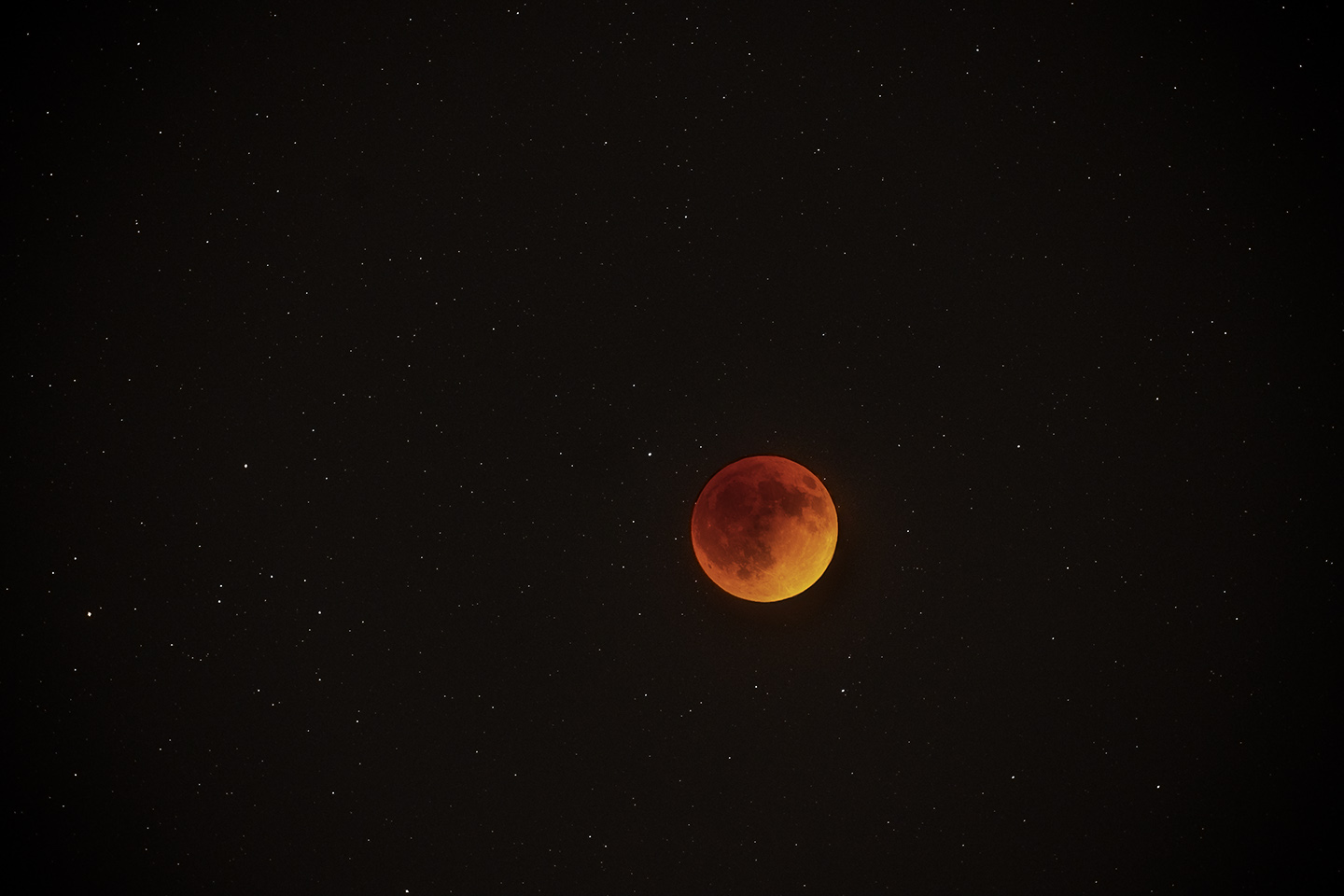
:: top ::
My deep-sky photos are made with a variety of sensors and optics. Deepest images come now from a ZWO ASI1600MM Cooled Pro CMOS camera, an ASIair (model 1) and sometimes one of several laptops. A good many images come from an unmodded Canon 6D but a lot more will be coming from an R6. Video and video extracts begin in a Canon EOS M, usually running in crop mode via Magic Lantern firmware (but the 6D and especially the R6 will probably see more use). Telescopes include an AT10RC, an Orion 10" F4 Newtonian, and a pair of apochromats: a TMB92SS and a AT65EDQ. A very early Astro-Physics 5" F6 gets some use, too. So do lots of camera lenses on both the ASI1600 and on the Canons. A solar Frankenscope made using a 90mm F10 Orion achromat and the etalon, relay optics, and focuser from a Lunt 60 feeding a small ZWO camera will see more action as the Sun comes back to life (Autostakkart!3 is my current fav for image stacking). Mounts include an iOpton SkyTracker (original model), a bargain LXD-55, a Losmandy G11 (492 Digital Drive), and an Astro-Physics Mach1. PixInsight does most of the heavy lifting; Photoshop polishes. Some of the toys are more or less permanently based in New Mexico. I desperately hope to get back soon.
|